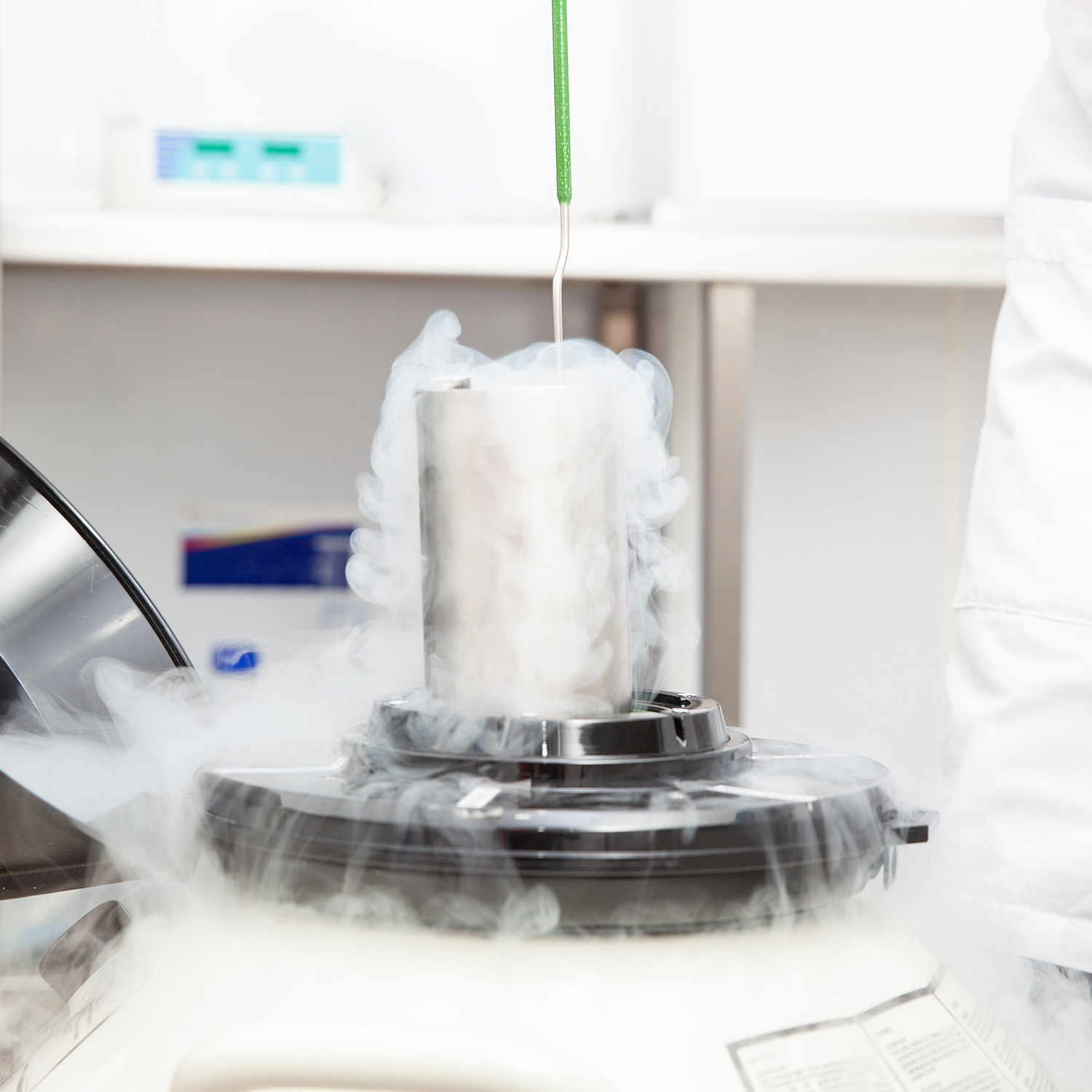Is your cryo-room consuming too much liquid nitrogen?

About the author
Stephen Robinson works at Air Products as BioMedical Product Manager. His background in chemistry led to a 27-year career at ICI, followed by time at Brenntag focusing on chemicals and gases. After 17 years with Air Products, he’s now a leading authority on cryogenic gases and equipment.
Over my many years in the biomedical industry, one thing has never ceased to amaze me: I’ve seen all kinds of laboratories, clinics and cryo-rooms, often working at the very cutting edge of science – and yet many of them run surprisingly inefficiently!
It’s not just a case of them costing more to run than they should either; they’re wasting time, money and resources, and also failing to meet sustainability targets.
Perhaps even more surprisingly though, with the right forethought and planning it’s relatively simple to turn the situation on its head, and maximise efficiency and sustainability. Here’s how.
Making the right choices
Now this might sound strange coming from someone who works for one of the leading suppliers of liquid nitrogen, but a big part of my role is to help customers use less of it.
Truth is, many clinics, labs and biobanks don’t realise the cost implications of making the wrong choices. But whether you’re creating a cryo-room from scratch, upgrading an existing one or simply buying a new freezer, there are a few significant considerations that are frequently overlooked.
Location, location, location
One basic element that can have an enormous impact on costs (and sustainability) is the location of your cryo-room.
It’s quite simple really – the further away your freezers are from the source of liquid nitrogen, the more pipework and the more cooling you’ll need to get the LN2 to where it’s needed. So ideally, you’d be able to minimise that by siting freezers on the ground floor next to an outside wall so the pipework can be simplified, cooling can be minimised and sustainability maximised.
Due to their location, space is often at a premium in clinics too – so choosing equipment that maximises sample storage space for a given footprint is a must.
For example, dewars are a useful piece of kit, but having a storage room packed with dewars soon uses up limited space and makes managing and accessing samples difficult. They also need manual filling, and you’d need to buy a separate liquid level/temperature alarm for each one – in short, they’re not the right solution for high quantity long-term sample storage below -150˚C. So what is?
Finding the right solution
Look at larger liquid nitrogen freezers, and you’ll discover there’s a wide range available at a wide range of prices. Given the difficulties and risks of storing in liquid nitrogen itself, most of these freezers use a form of vapour storage created from a reservoir of LN2. But many of the less expensive ones are designs that have been modified for vapour storage from liquid storage – which compromises performance on many levels (more of that in a moment).
The problem I’ve most encountered is customers choosing the wrong freezer – and there can be a number of reasons for this. If you already use a particular type or make of freezer, it may seem easiest to just replace like-for-like; it may be that those making the decision don’t know there are better options available; or worse still, it may come down to cost and going for the cheapest. But for me, it’s absolutely vital to look at running costs and not just the purchase price.
How 'cheap' soon turns nasty
Here’s an example of how quickly the wrong choice of freezer can lead to mounting costs and missed sustainability targets.
Say that rather than go for a freezer specifically designed for vapour storage, you’ve opted for a design that’s been adapted from a liquid storage model, or one that stores the LN2 in a jacket with a dry vapour storage area. That freezer will probably have cost you less to buy, but it has a small liquid nitrogen reservoir so uses more LN2 just through evaporation and calls for a fill more frequently (every 1-2 days, as opposed to every 4-7 days with an efficient vapour storage freezer).
If you’re auto-filling from an external tank connected via an SIVL (Super Insulated Vacuum Insulated Line), the longer that line and the more frequently it’s used, the more liquid nitrogen you need to cool it down to cryogenic temperature before the freezer can be filled. That has a major impact on the amount of LN2 drawn from the external tank, so you’ll need more deliveries to prevent you running out of LN2.
To compensate for the higher LN2 consumption of your inefficient freezers, you’ll need to consider having a larger tank or more frequent deliveries. But it’s not always that simple – you might not have room for a larger tank, and your LN2 supplier can’t always guarantee enough deliveries to meet your demand.
And as well as needing a fill every 1-2 days, your inefficient freezer’s design is fundamentally compromised so has a hold time of just 2-4 days rather than the 13-21 days of an efficient vapour freezer – meaning you’ll also need cover over holiday periods to ensure sample safety.
So, as you can see, that tempting low purchase price can soon become a nightmare of running costs becoming out of control.
The benefits of choosing the right freezer
As I said earlier, my job is to advise customers on cryo-room solutions that maximise efficiency and sustainability while minimising the overall costs. While purchasing a freezer specifically designed for vapour storage is more expensive initially, this money will be recovered in the long term thanks to reduced running and security costs. Once the initial investment is paid for, the financial benefits will only continue.
One of the liquid nitrogen freezers we often recommend is the MVE HEco Series. MVE has an enviable reputation for quality built on over 60 years’ experience, and the HEco Series is no exception. It’s equipped with robust built-in safeguards for uninterrupted sample preservation, with an advanced alarm system and innovative insulation technology to provide a buffer period of up to 13 to 27 days before samples reach critical temperatures – giving ample time to resolve any issues.
Most of all though, the HEco Series has been engineered for streamlined operation and energy efficiency. There’s no need for manual top-ups, with automated monitoring and auto-fill functionality. It consolidates all your samples into one centralised space, simplifying management by optimising the storage available in a smaller footprint. Unlike freezers that have the lid covering its full width, thus making it difficult to reach samples at the back, the HEco models also have an internal carousel that brings samples up to the operator. And other advanced features such as streamlined LN2 plumbing, vacuum-jacketed transfer hose and extended hold times have been designed in to minimise resource usage.
In conclusion
Experience has shown me that, in many cases, taking the long-term overview of any cryo facility can really pay dividends. Too many people just don’t realise the right solution is out there though, and pay for it in the long run – and yet it’s so easy to avoid wasting time, money and resources.
To find out more about how you can improve your cryo-room, talk to any of the Air Products team. Or, for more details on the MVE HEco Series of LN2 freezers, click here.





















